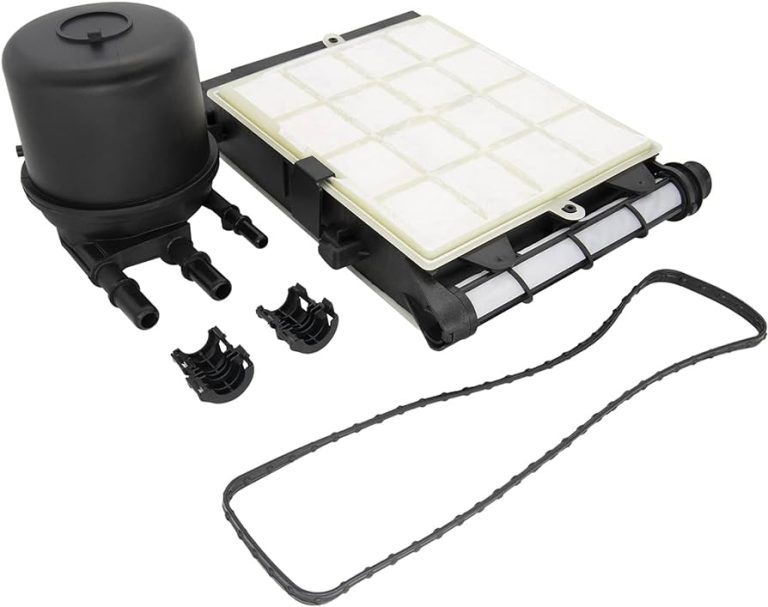Can I Use 5W-20 Instead of 5W-30? Understanding Engine Oil Viscosity
Choosing the right engine oil for your vehicle is essential for maintaining optimal performance and longevity. When it comes to selecting the correct oil, one common question that arises is whether it’s acceptable to use 5W-20 instead of 5W-30 (or vice versa). While both oils fall within the same viscosity range, there are important differences that must be considered.
Engine oil viscosity refers to its thickness or resistance to flow at different temperatures. The first number (e.g., 5W) indicates the oil’s viscosity at cold temperatures, while the second number (e.g., 20 or 30) represents its viscosity at operating temperatures. These numbers provide crucial information about the oil’s flow characteristics under specific conditions.
In this blog post, we will explore the differences between 5W-20 and 5W-30 oils, discuss the factors to consider when choosing between them, and provide guidance on compatibility and potential consequences of using one oil in place of the other. Understanding the importance of oil viscosity and making informed decisions will help you ensure that your vehicle’s engine remains protected and performs optimally.
Can I Use 5w20 Instead Of 5w30?
The question of whether you can use 5W-20 instead of 5W-30 engine oil often arises, especially when considering oil options for your vehicle. While it’s important to consult your vehicle’s owner’s manual for specific recommendations, here’s some general information to consider.
The numbers in the oil’s viscosity rating (e.g., 5W-20 or 5W-30) indicate its flow characteristics under different temperature conditions. The first number represents the oil’s viscosity during cold starts, while the second number represents its viscosity at normal operating temperatures.
In some cases, using 5W-20 instead of 5W-30 oil may be acceptable. However, it’s crucial to consider a few factors before making a decision:
1. Manufacturer Recommendations: Check your vehicle’s owner’s manual for the recommended oil viscosity. The manufacturer’s guidelines are designed to ensure optimal engine performance and longevity.
2. Climate and Operating Conditions: Consider the typical weather and driving conditions in your area. If you live in a region with extremely hot temperatures or frequently tow heavy loads, using the manufacturer-recommended 5W-30 oil may be more suitable for better engine protection.
3. Engine Design and Wear: Older or high-mileage engines may have looser tolerances and can benefit from slightly thicker oil, such as 5W-30, to provide better lubrication and reduce internal wear.
It’s worth noting that using 5W-20 oil instead of 5W-30 oil might affect fuel efficiency slightly, as the thinner oil can reduce internal friction. However, the impact on fuel economy is typically minimal.
What Happens If You Put 5W-20 Instead Of 5W-30?
If you accidentally or intentionally use 5W-20 engine oil instead of the recommended 5W-30 oil, there are a few potential consequences to be aware of:
1. Thinner Oil Film
5W-20 oil has a lower viscosity than 5W-30 oil, meaning it is thinner. Thinner oil may not provide the same level of protection for engine components, especially in high-temperature and high-stress conditions. This can potentially lead to increased wear and reduced engine longevity.
2. Reduced Lubrication
The thinner consistency of 5W-20 oil may result in reduced lubrication between moving parts, such as bearings, piston rings, and camshafts. Inadequate lubrication can lead to increased friction and wear, potentially causing premature engine component failure.
3. Oil Consumption
Thinner oil tends to have a higher tendency to burn off or evaporate at high temperatures. Using 5W-20 oil in an engine designed for 5W-30 oil may result in increased oil consumption, requiring more frequent oil top-ups to maintain the proper oil level.
4. Engine Performance
Engine performance may be affected when using a different oil viscosity than recommended. The engine’s designed oil flow rates and operating parameters are optimized based on the recommended viscosity. Deviating from this may result in suboptimal engine performance, reduced power output, or even potential issues with fuel economy.
Can I Mix 5w20 With 5w30?
While it is generally not recommended to mix different viscosities of engine oil, such as 5W-20 and 5W-30, in the same engine, there are certain circumstances where it may be acceptable. Here are a few considerations to keep in mind:
1. Emergency Situation
If you find yourself in a situation where you urgently need to top up your engine oil and only have a different viscosity available, mixing 5W-20 with 5W-30 as a temporary solution is generally considered acceptable. However, it should only be done in small quantities and for a short period of time until the appropriate oil can be obtained.
2. Similar Viscosity Range
5W-20 and 5W-30 oils fall within a similar viscosity range, but 5W-30 is slightly thicker. Mixing them in small amounts may result in an intermediate viscosity, which may not have a significant impact on engine performance or lubrication.
3. Consistency
If you decide to mix the oils, it’s important to ensure a thorough and proper mixing of the two oils before adding them to the engine. This helps to maintain a consistent oil viscosity throughout the engine.
4. Long-Term Use
Mixing different viscosity oils for extended periods is not recommended. Engine oil is specifically formulated to meet certain performance and viscosity requirements, and using the correct viscosity is crucial for optimal engine protection and performance.
What Is The Difference Between 5W-20 And 5W-30 Oil?
The difference between 5W-20 and 5W-30 oil lies in their viscosity, which refers to the oil’s thickness or resistance to flow. Here’s a breakdown of the key distinctions:
1. Viscosity at Low Temperatures
The “5W” in both oil designations indicates their viscosity at cold temperatures. The lower the number, the thinner the oil. Both 5W-20 and 5W-30 oils have a similar viscosity when the engine is cold, allowing them to flow easily during startup and provide quick lubrication to engine components.
2. Viscosity at Operating Temperatures
The second number represents the oil’s viscosity at normal operating temperatures. In this case, 5W-30 oil is thicker than 5W-20 oil. At higher temperatures, 5W-30 oil provides better lubrication and maintains a stronger oil film between engine components.
3. Engine Protection
Thicker oil, like 5W-30, can provide enhanced protection in high-stress conditions, such as towing or extreme temperatures. It forms a more durable oil film, reducing metal-to-metal contact and minimizing wear on engine parts. However, the difference in wear protection between 5W-20 and 5W-30 oils is generally minimal for most everyday driving scenarios.
4. Fuel Efficiency
Thinner oils, such as 5W-20, have the potential to improve fuel efficiency due to lower internal friction. The thinner oil flows more easily, requiring less energy to move through the engine. While the impact on fuel economy may vary, manufacturers often recommend lower-viscosity oils like 5W-20 to meet fuel efficiency regulations.
Frequently Asked Questions
Q: Can I substitute 5W-20 oil for 5W-30 oil?
A: While it’s generally recommended to use the oil viscosity specified by the manufacturer, there are certain considerations to keep in mind.
Q: What’s the difference between 5W-20 and 5W-30 oils?
A: The main difference lies in their viscosity. 5W-20 is thinner than 5W-30, particularly at operating temperatures. Thinner oil may offer improved fuel efficiency, while thicker oil provides enhanced protection under high-stress conditions.
Q: Is it acceptable to use 5W-20 instead of 5W-30 in my vehicle?
A: It depends on factors such as climate, driving conditions, and the manufacturer’s recommendations. Some newer vehicles, especially those focused on fuel efficiency, may specify 5W-20 oil. However, for older or high-performance engines, 5W-30 may be more suitable.
Q: What are the potential consequences of using 5W-20 instead of 5W-30?
A: Thinner oil may not provide the same level of protection in high-stress situations, potentially leading to increased wear. However, the impact is typically minimal for everyday driving. It’s essential to consider the manufacturer’s recommendations and consult the owner’s manual for your specific vehicle.
Q: Can I mix 5W-20 and 5W-30 oils?
A: While it’s generally not recommended to mix oils with different viscosities, in emergency situations, mixing small amounts of 5W-20 with 5W-30 as a temporary solution is generally acceptable. However, it’s important to use the recommended viscosity for regular oil changes.
Q: What should I do if I accidentally used 5W-20 instead of 5W-30 or vice versa?
A: If you used the wrong oil, it’s best to drain and replace it with the correct viscosity as soon as possible to ensure proper engine protection. Consult a trusted mechanic or refer to the manufacturer’s guidelines for further assistance.




